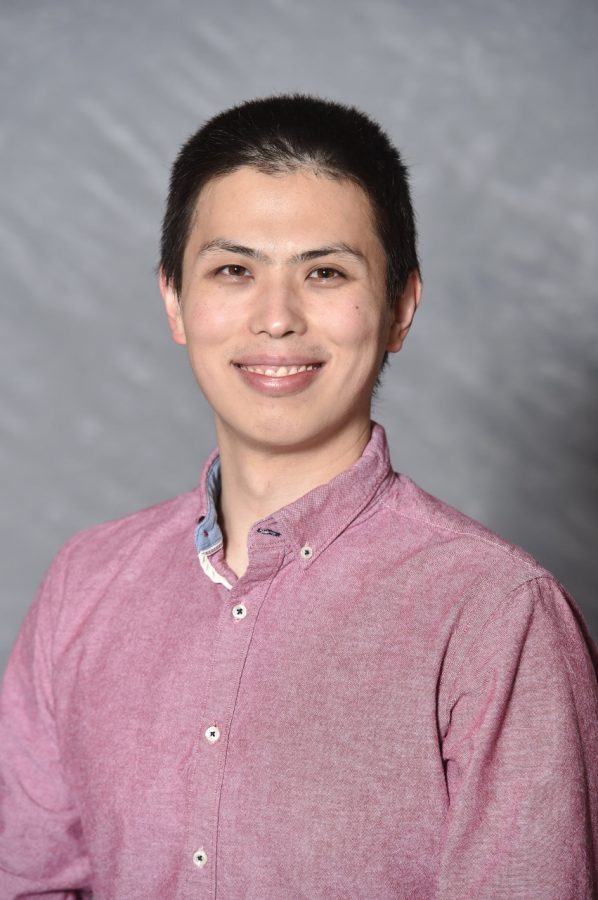One challenge after another: creating lithium-sulfur rechargeable batteries
Sulfur is cheap, non-toxic alternative to cobalt; future research focuses on improving battery life
Shuo Feng, pictured here, is studying lithium sulfur batteries as a replacement for traditional rechargeable batteries.
June 22, 2021
WSU alum Shuo Feng is developing lithium-sulfur rechargeable batteries, which could replace traditional lithium-ion batteries used in electric cars, allowing them to drive farther on a single charge.
Feng recently won the Material Research Society’s Best Oral award for a presentation on his lithium-sulfur battery research.
“I think they liked my research rather than my presentation,” Feng said. “This research, from my view, is very important in this field.”
Lithium-ion batteries — like the ones used in Teslas and other electric cars — contain costly, toxic metals such as cobalt, Feng said. Sulfur is a cheap, safe alternative that can replace cobalt in the cathode, or positively charged electrode, of batteries.
Sulfur is a byproduct of oil refining, so it is inexpensive and widely available. The U.S. produces millions of tons of sulfur each year. Unlike cobalt, sulfur is non-toxic to humans and the environment, he said.
Sulfur has a high energy density, so it can store a lot of energy, but it is difficult for researchers to harness all of it, Feng said. This means they have not achieved ideal conditions to make all of the sulfur react with all of the lithium in the batteries.
Theoretically, the lithium-sulfur battery’s energy density could be several times higher than the current lithium-ion battery, said Yuehe Lin, Feng’s doctoral adviser and WSU School of Mechanical and Materials Engineering professor.
Mixing carbon materials with the sulfur in the cathode could help solve the problem because carbon makes sulfur more conductive and helps release some energy capacity, Feng said. Researchers developed various nanocarbon materials to use in high performance lithium-sulfur batteries.
However, adding nanocarbon materials creates another challenge because they are very hard to synthesize, he said.
“So the problem is, sulfur is very cheap, but if the carbon is very expensive, it will sacrifice the advantages of using sulfur as a cathode,” Feng said.
Researchers are trying to understand if nanocarbon materials are feasible under practical conditions, he said.
Researchers need to balance three parameters to create a working lithium-sulfur battery. Increasing one of the parameters to a practical level puts the other parameters out of balance, he said.
This is causing significant problems in creating a practical lithium-sulfur battery, Feng said.
Lithium-sulfur batteries can store high levels of energy but have a relatively short life due to the energy storage capacity diminishing over time. A car running on this type of battery would get less mileage per charge after several years of use, Lin said.
Feng said he will focus on these problems in the next phase of his research as a postdoctoral fellow at Pacific Northwest National Laboratory. PNNL is a leading battery technology center based in Richland, Washington.
During his WSU doctoral studies, Feng participated in a WSU and PNNL partnership called the Distinguished Graduate Research Program. He said the program made it possible for him to work at PNNL.









